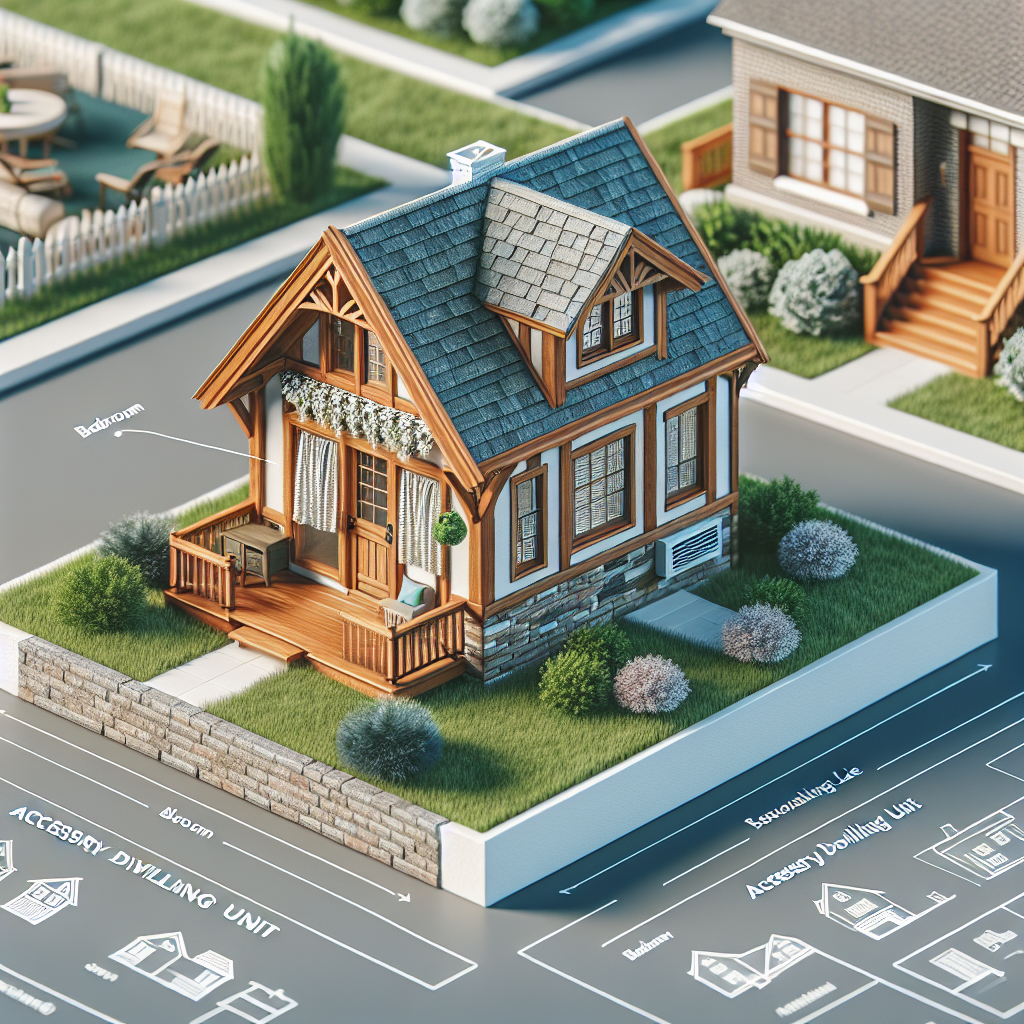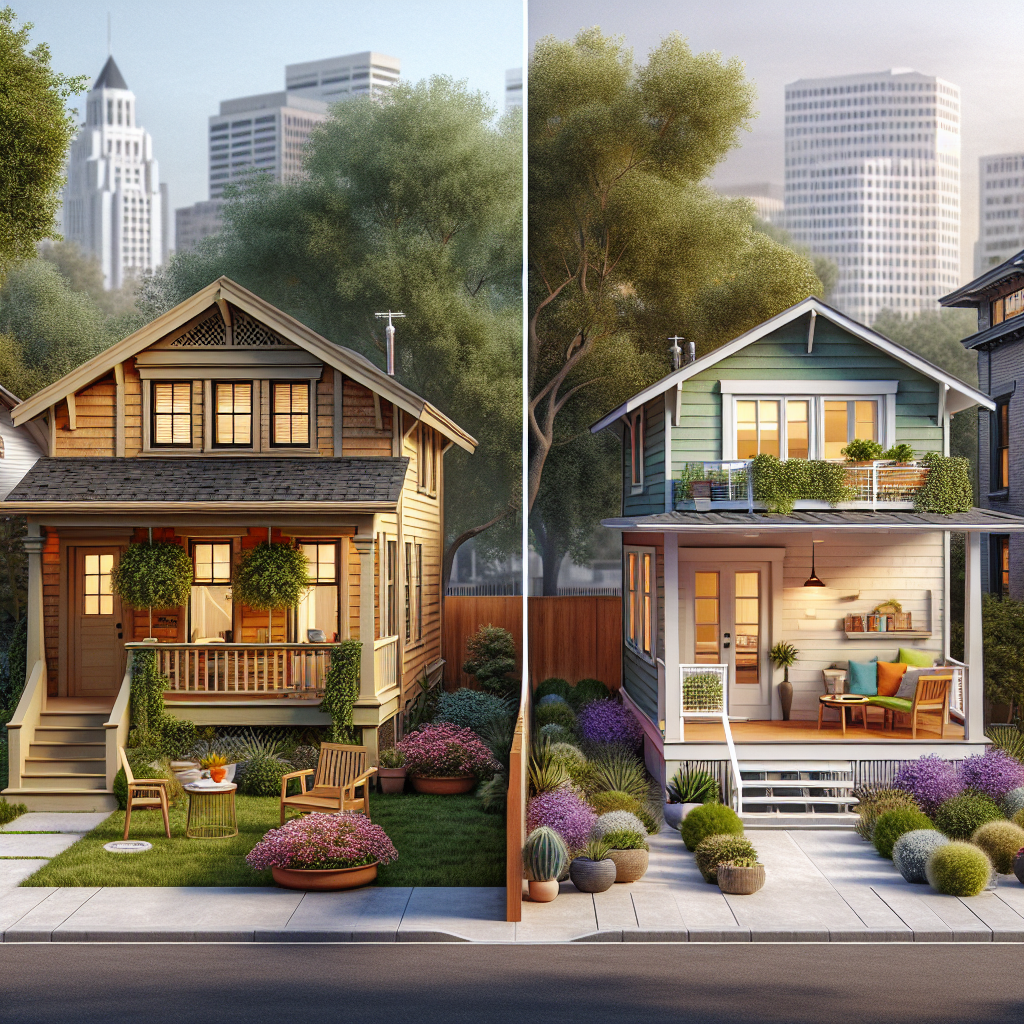The housing landscape is changing. One trend that's gaining traction is the accessory dwelling unit (ADU).
ADUs, also known as granny flats or in-law suites, are small, self-contained homes on the same property as a larger, primary residence. They're becoming increasingly popular, particularly in urban areas like Arlington, VA, and Sacramento.
But why are ADUs on the rise? They offer a range of benefits, from providing additional income to addressing housing shortages. They're also seen as a solution for multi-generational living and a way to promote sustainable living.
However, building or buying an ADU comes with its own set of considerations. From understanding local regulations to considering design and cost factors, there's a lot to think about.
In this article, we'll delve into the world of ADUs. We'll explore their benefits, why they're becoming popular, and what you need to know if you're considering one.
Whether you're a homeowner, a real estate investor, or just interested in alternative housing solutions, this guide is for you.
What is an Accessory Dwelling Unit (ADU)?
An accessory dwelling unit, or ADU, is a secondary housing unit on the same property as a primary residence. It's a fully functional living space, complete with a kitchen, bathroom, and sleeping area.
ADUs can take many forms. They can be detached structures, like a backyard cottage, or attached to the main house, like a basement apartment. They can also be created through the conversion of existing spaces, such as garages or attics. Regardless of the form, ADUs offer a unique solution to a variety of housing needs.
The Benefits of ADUs
ADUs offer a host of benefits, making them an attractive option for homeowners and real estate investors alike. One of the primary advantages is the potential for additional income. Homeowners can rent out their ADU, providing a steady stream of revenue.
Another significant benefit is the increased property value. Adding an ADU to your property can significantly boost its market value, making it a smart investment.
ADUs also play a crucial role in addressing housing shortages. In densely populated urban areas, they provide much-needed additional living spaces.
Moreover, ADUs are a solution for multi-generational living. They offer a private space for aging parents or adult children, fostering family unity while maintaining independence.
Here are some key benefits of ADUs:
- Potential for additional income
- Increased property value
- Solution to housing shortages
- Ideal for multi-generational living
- Environmental benefits due to smaller size and efficient use of land
Why ADUs Are Gaining Popularity
The rise in popularity of ADUs can be attributed to several factors. Firstly, the ongoing housing crisis in many urban areas has led to a search for alternative housing solutions. ADUs, with their compact size and cost-effectiveness, provide a viable option.
Secondly, the shift towards sustainable living has also contributed to the ADU trend. These units, often smaller and more energy-efficient than traditional homes, align with the principles of minimalism and environmental consciousness.
Lastly, the flexibility that ADUs offer is another appealing factor. They can serve various purposes, from rental properties to home offices, making them a versatile addition to any property.
In Arlington, VA, and Sacramento, ADUs are becoming increasingly popular. These areas are experiencing a surge in demand for affordable housing. ADUs offer a practical solution to this issue.
In Arlington, the local government has eased restrictions on ADUs. This move has encouraged homeowners to consider this housing option. In Sacramento, the city has seen a rise in ADU applications, reflecting the growing interest in this housing trend.
However, building an ADU in these areas requires understanding local regulations and the construction process. Let's delve into these aspects.
Understanding Local Regulations
In Arlington, VA, ADUs are permitted in most residential zones. However, there are specific requirements regarding size, height, and location. It's crucial to familiarize yourself with these regulations before starting your project.
In Sacramento, the city has also established guidelines for ADUs. These include rules about unit size, parking, and design. Understanding these regulations can help ensure your ADU project is compliant and successful.
Local planning departments can provide detailed information on ADU regulations. It's advisable to consult with them during the planning stage of your project.
The Process of Building an ADU
Building an ADU involves several steps. First, you need to design the unit, considering factors like size, layout, and functionality. Hiring a professional architect or designer can be beneficial at this stage.
Next, you need to obtain the necessary permits. This process involves submitting your design plans to the local planning department for approval. It's important to ensure your plans comply with all local regulations.
Finally, the construction phase begins. Hiring a reputable contractor with experience in building ADUs can help ensure a smooth construction process and a high-quality end result.
Design and Cost Considerations
When designing an ADU, it's crucial to maximize space and functionality. This often involves creative solutions to make the most of a small area. It's also important to consider the cost of construction, which can vary widely depending on the size and complexity of the project.
Maximizing Space and Functionality
Efficient use of space is key in ADU design. This might involve multi-purpose furniture or innovative storage solutions. It's also important to consider the layout, ensuring it's practical and user-friendly.
Natural light can make a small space feel larger. Including plenty of windows in your design can enhance the sense of space in your ADU.
The Cost of Constructing an ADU
The cost of constructing an ADU can vary greatly. Factors influencing cost include size, design complexity, and local construction costs. On average, homeowners can expect to spend between $100,000 and $200,000 on an ADU project.
However, it's important to remember that an ADU can also generate income. Whether used for long-term rental or short-term accommodation, an ADU can provide a significant return on investment over time.
The Impact of ADUs on Communities
ADUs can have a significant impact on communities. They can help to alleviate housing shortages, providing affordable options in areas with high property prices.
Moreover, ADUs can foster a sense of community. They allow for multi-generational living and can create more diverse and vibrant neighborhoods.
Future Outlook for ADUs
The future of ADUs looks promising. As urban areas continue to grow, the demand for efficient and affordable housing solutions is likely to increase.
Moreover, as sustainability becomes a key concern, the small footprint and efficient design of ADUs are expected to gain further popularity.
The rise in popularity of ADUs is a testament to their versatility and practicality. They offer a unique solution to many of the housing challenges we face today.
Whether it's for additional income, housing loved ones, or promoting sustainable living, ADUs are a trend worth watching.












.jpg)




0 Comments